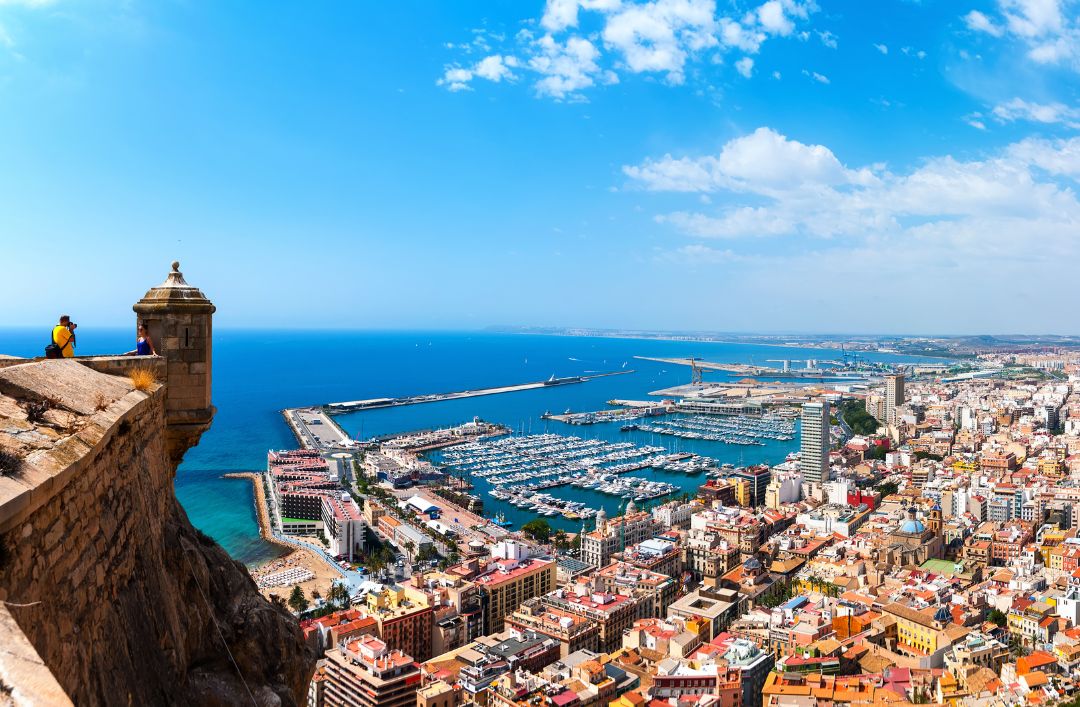
Jul 6, 2022 | Activities/Services, Events, Other towns
The province of Alicante is also known as Alifornia, especially during the summer months, a verbal pun combining Alicante and California, because the fact is the holiday vibe, the endless stretches of sandy beaches and the culture and nightlife have made Alicante and its coastal towns more than a match for the American Golden State.
Now that summer is here and the sun and the blue of the Mediterranean set the scene with a landscape bound to make anyone smile, we propose a series of plans and activities of all kinds to get the very best out of this little piece of California in Europe (or maybe California is the American Alicante? Calicante perhaps?)
Alicante – History and leisure
Just an hour’s drive by car from Cumbre del Sol, in the heart of Alicante city, you can visit the Castle of Santa Bárbara. This historic fortress makes the most of the summer months and until 4 September 2022 it has extended its opening hours from 10 am to 11 pm and alongside the extra hours a huge range of leisure and entertainment activities are available. From 15 to 17 July you can visit an area that offers gastronomy, decoration and a great atmosphere with pirate and medieval themed exhibitions. Musicians and actors will be performing all over the place and there will be a market with craft stalls, along with games and children’s entertainment. There are many more activities that you can check out by clicking on this link.
Music and Mediterranean sea: a great combo
Music in the open air, an area with restaurants, cocktail bars and beach clubs… Sounds good right? Well then this summer you need to take a trip down to the port of Alicante, which will be hosting the StageConfetti y Fiera event. Rulo y la Contrabanda, Shuarma, The Levitans and Mon Laferte, are just some of the first acts who have signed up to perform on stage in the new venue at the Port of Alicante.
And for true music buffs, you couldn’t do better than take a look at the agenda of Área 12. It’s the perfect place in Alicante to take in a concert and then go for a drink at the Mahou Beer Garden. Leiva, Beret e Izal, and many more artistes will be performing there this summer. Other interesting possibilities are the music events Low Festival and Boombastic. You’re spoilt for choice. Take your pick!
Something a bit more chilled?
As we mentioned at the start of this post, the Alifornian spirit pervades not only the provincial capital but it is also thriving in Costa Blanca Norte. Live and enjoy the Summer any way you want. Who wouldn’t like something a little more relaxing from time to time. If you don’t feel like spending a day on the amazing beaches and sandy coves that line the coast, why not enjoy some theatre at Auditori de Altea or a guided walk through one of Benissa’s charming areas.
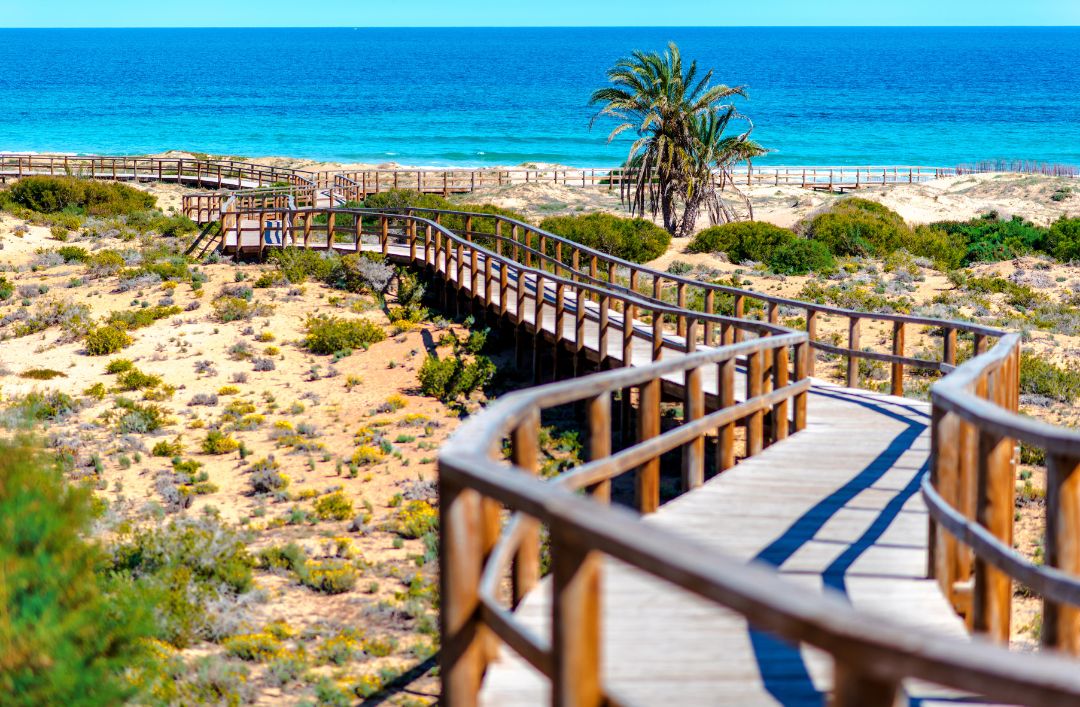
Musical, cultural, historical, and natural activities … the leisure and entertainment on offer this summer within a few kilometres of Cumbre del Sol is both extensive and varied. Choose your favourite events and activities and get ready to enjoy the rest of the summer in Alifornia, and don’t forget to keep an eye on our upcoming blog entries.
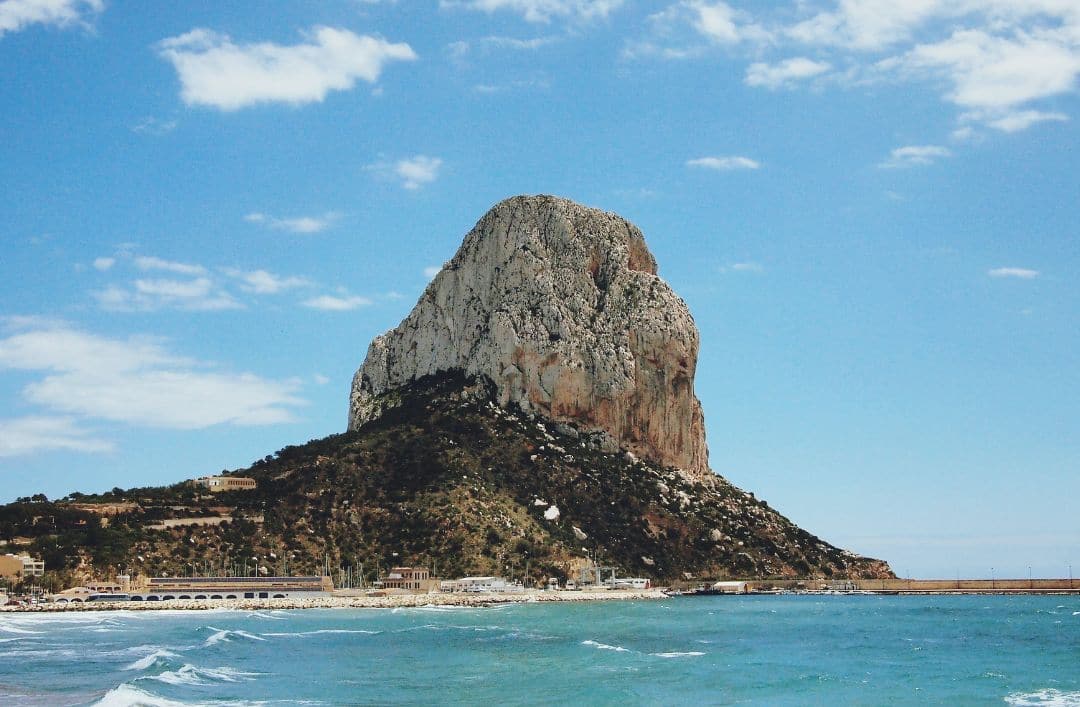
Jun 8, 2022 | Activities/Services, Cumbre del Sol, Other towns, Otros pueblos, Something special
The Costa Blanca is a favourite tourist destination. It is just like an open air museum filled with history, culture and festivities. Aside from its fabulous beaches, there are many places of interest that are worth a visit, and the splendour and cultural heritage of its villages invite you to explore and discover them further.
Romanesque churches, historic neighbourhoods with their Arab architecture, or castles from a bygone age. Fiestas, monuments and tradition which will take you back to remote times as you explore the cultural heritage of the villages in this area. Discover some magical places just a step away from the Mediterranean seashore!
Festivals and fun on the Costa Blanca
There’s a festive spirit in the streets of the Costa Blanca’s towns and villages all year round. Participation in these celebrations is always a popular activity. You have probably heard of the night of San Juan or the Moros y Cristianos fiesta. However, first things first, what do you actually know about their origins?
Moros y Cristianos
Altea, Denia, Calpe, Villajoyosa or Alcoy are well known for their popular celebrations of the Moros y Cristianos festivities held in honour of the patron saints of these Costa Blanca towns.
As the oldest residents will tell you, faithful to their religious beliefs, thanks to these patron saints, the Christians were able to overcome the Muslims in battle. This historic celebration spans a period of 3 to 5 days and is held in a number of cities and at different times of the year. The highlight of this fiesta is the Desembarco – the disembarkment – which commemorates the arrival of the Moorish troops on the coast and their battle on the beach with the Christian forces determined to reconquer the land. It’s an impressive spectacle!
Altea is synonymous with festivity. Almost every month there is a fiesta in this municipal district, but it is in summer that the fiestas really come into their own.
Easter Week and Corpus Christi are the main religious events of the year. In February the streets are vibrant with colour as the residents celebrate their famous Carnaval. Meanwhile, Castell de l’Olla celebrates on the Saturday that falls closest to feast of San Lorenzo in Altea. It holds Spain’s biggest fireworks display from the sea. It also celebrates its own Moros y Cristianos fiestas.
San Juan Bonfires
When summer comes, this area of the coast attracts worldwide interest. The San Juan Bonfires begin on 19 June, and the ‘Mascletás’, the Proclamation, processions, street parades, firecrackers and bell ringing are all part of the festivities, culminating in the famous bonfire night the ‘Cremà’ (24 June).
Fireworks
The culmination of all these festivities and Bonfires is a particularly special event. The celebration takes place every year after the bonfires, held from the 25 to 29 June. Postiguet beach is host to a fireworks contest. The most stunning pyrotechnic displays can be found here on the Costa Blanca.

History and much more on the Costa Blanca
The historic quarters of many of the area’s towns are another major attraction of the Costa Blanca. Neighbourhoods that harbour amazing legends and impressive monuments.
Altea church
In the heart of Altea’s historic centre, this church dates from 1607, when it was first built. A stroll around its square and the surrounding area will take you right back to the 16th century. The church has been a mute witness to the passage of time in the town becoming an historic and cultural icon of Altea.
Bust of Cervantes
In Dénia, the most famous part of town is known as Explanada de Cervantes, where you can find a bust of the celebrated writer Don Quixote. The story goes that in 1580 when Cervantes was freed from prison he went to the port of Dénia, kissing the actual spot where this monument now stands.
The Castle Route
There are over 100 castles on the Costa Blanca. Fortresses that were the strongholds of the ancient Visigoth kings and the most important monarchs in the area. The Castle Route will draw you into a magical cultural experience. There are many such citadels along the route that runs from the mountains down to the sea.
Legends, culture and festivities that bear witness to the Costa Blanca’s wealth of mystery, entertainment and fun. Living history alongside the Mediterranean sea. How about choosing it as a place to live?
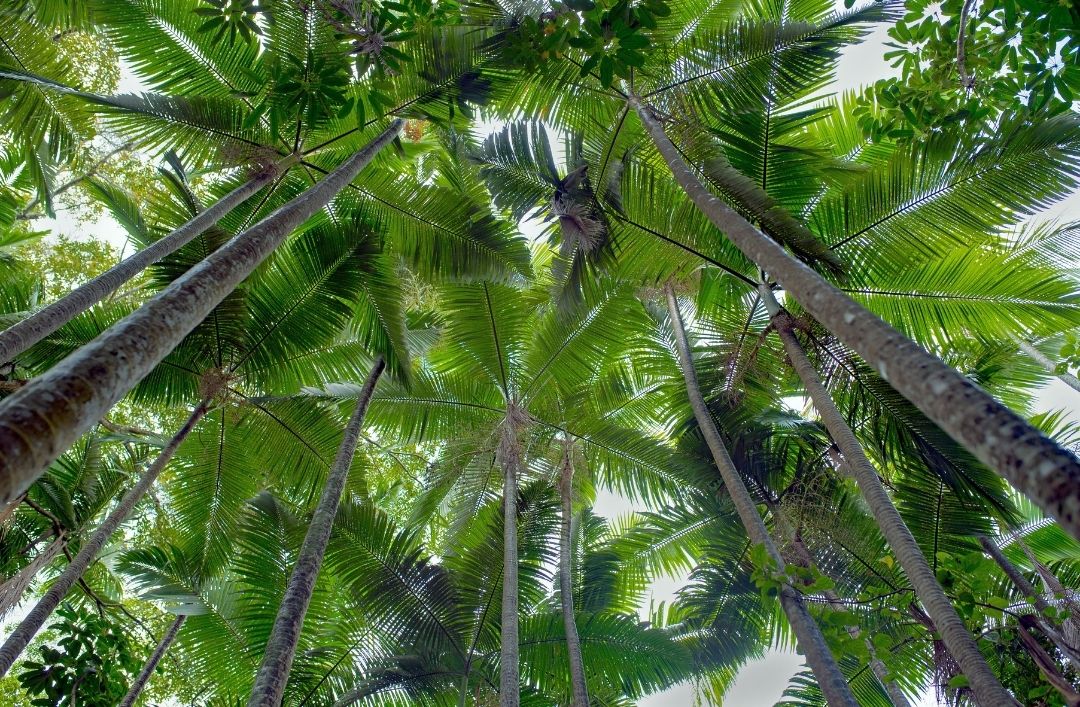
May 23, 2022 | Events, Other towns, Otros pueblos
Promoting identity, protection, and preservation of natural and cultural heritage is considered to be especially valuable for humanity. This is, and for a long time now, one of the main works of UNESCO (United Nations Educations, Science, and Culture organisation). The title World Heritage Site is a distinction for these types of places. In the Costa Blanca, and around it, we’re lucky enough to have a few of these places.
Before talking about these marvels, we want to briefly clear something up. Firstly, there’s two main types of heritage. “Cultural heritage”, which refers to monuments, groups of buildings and sites that have historical, artistic, or archaeological value. In this category, you’ll also find places with scientific, ethnic, or anthropological value. “Natural heritage” refers to exceptional physical, biological, and geological formations. This goes for animal habitats, endangered plants, and area that have scientific, conservation, or visual value. On the other hand, we also have “Intangible cultural heritage”, which includes living inherited practices and expressions from our ancestors. This is heritage that is passed down generation to generation, like oral traditions, scenic art, social customs, rituals, festivals…
All along the Costa Blanca and all around it, we have places that include all three types of heritage. Take note and plan a weekend escape to visit them!
El palmeral (Elche)
Over 200,000 palm trees look down on the urban centre of Elche. Since the year 2000, the place of the Costa Blanca has become a World Heritage site.
The Mediterranean diet
This diet was declared Intangible Cultural Heritage in 2013, the reasons being it’s richness, variety, and health benefits. You can enjoy the Mediterranean diet in all its form in the Costa Blanca. And along the whole coast of the Valencian Community! From markets where exquisite raw materials are sold all the way to the best restaurants that have kept this tradition and the essence of Mediterranean cuisine. Flagship restaurants known for exploring this cuisine, respecting its differentiating features, and being recognised worldwide for its variety of flavours and textures and for its health benefits.
Cave art
Cave art in itself is a unique cultural manifestation. And it also represents the prehistoric society that lived in the place where the Costa Blanca is today. In and around the area, there are plenty of these depictions, but if we had to recommend one in particular, we’d go for the following: Moixent with the drawings Abrigo de la Penya and Abrigo de Gontran. You can also visit the ones in the Caroig massive (Cueva de la Araña y abrigos del Barranco Moreno).
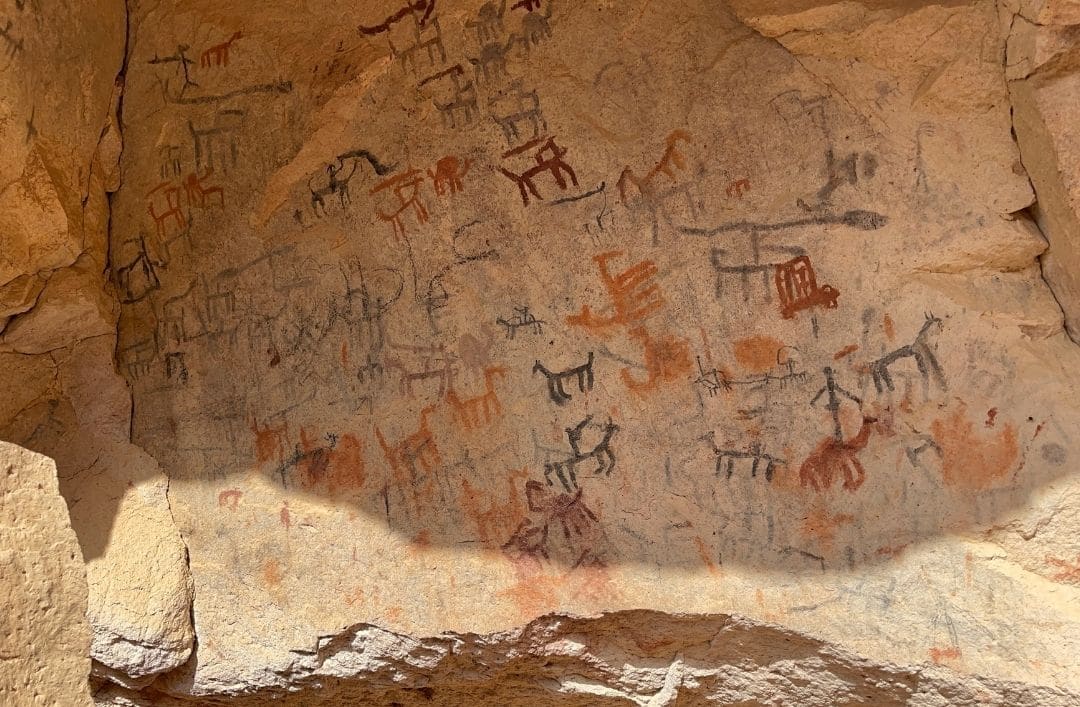
The mystery of Elche (Elche)
Declared as Oral heritage and Intangible world heritage in 2001, the Mystery of Elche is a cultural treasure in the city. This work of medieval origins is also known by the name of La Festa. It embodies all the years of the Basílica de Santa María de Elche’s history in the month of August. This activity celebrates the festival Virgen de la Asunción (the Virgin of Ascension).
Strong cultural legacy
The cultural legacy of the Costa Blanca brings together all kinds of activities and places that are steeped in history and tradition. Moors and Christians in Denia, Alcoy and Calpe, festivals in Altea and Alicante, Moorish quarters and castles in Guadalest and Javea are some of the best known experiences in the area. The options are almost endless and we encourage you to discover this land.
From rock castles at the foot of the Mediterranean, to those narrow cobbled streets where the smell of the sea mingles with the refreshing scent of jasmine, to massive parades of people, the magical Night of San Juan… everything feeds into an immense tradition and legacy.
In addition to the World Heritage Sites that we have reviewed in this entry, the Costa Blanca has some of the most beautiful historic centres in Spain. Clear examples are the Barrio de Santa Cruz in Alicante and those of Javea, Denia, Benissa and Teulada. All of them sharing one common feature: the Mediterranean sunlight.
Don’t miss our blog articles where we’ll give you more ideas on plans all over the Costa Blanca.
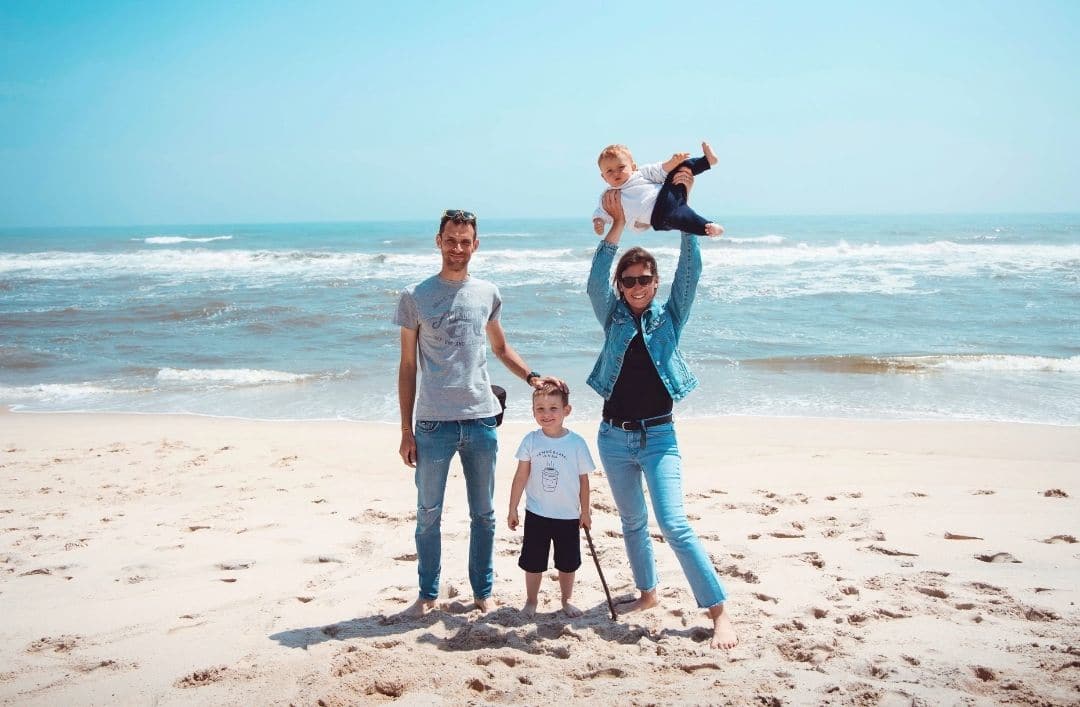
May 12, 2022 | Benitachell, Events, Fiestas, Sin categoría, Something special
When we talk about Benitachell, the best sunsets on the Costa Blanca quickly come to mind. From the most secluded coves to the large, well-known beaches that are visited every year by thousands of tourists. And the residents of Cumbre del Sol are lucky enough to enjoy it all year round. As well as its cuisine and wide variety of plans that can be as relaxing or as daring as you like.
But there is so much more. If you don’t know what to do over the coming weekends and you feel like spending time with your loved ones, using International Family Day as an excuse, we’ll tell you how you can make the most of your free time in the Benitachell area.
Viewpoints and nature
Benitachell is full of contrasts: hills and valleys, coast and inland, beaches and high cliffs… Nature has taken root all the way along the Costa Blanca, creating an environment worthy of admiration. We find all kinds of natural features such as the Falla del Moraig and the Vasenilla depression. And also, the cliffs of La Marina are a spectacular place to go on a trip with the family. Another good plan is to climb Puig Llorença, from where you can see as far as the island of Ibiza. Or descending down to the underground river of Moraig is also an attractive plan.
The municipality has several locations from where you can ponder beautiful scenery. The viewpoints are distributed throughout the town centre and along the coast. They thus offer film-like views with the Mediterranean as the protagonist at all times. Cantal de Gener, Mirador del Poble, del Portalet, dels Testos, Morro del Bou, Racó de l’Illot… There is a wide range on offer and you won’t be able to visit them all in one day. So, take it easy and enjoy each one of them in your own time.
Beaches: a classic
What could be better than a day at the beach with the family? In just two kilometres, you can enjoy amazing coves with crystal clear waters and underwater caves.
- Cala dels Testos. One of the main attractions of this cove is its exclusivity due how difficult it is to access. You have to descend down a ravine with a rope or enter by boat (or other craft) along the coastline. This is activity is not suitable for young children, but it is undoubtedly a very special route for the more adventurous.
- Cala de Llebeig. Llebeig cove is an unspoilt cove, with no tourist services, it still has a special charm. Some of its caves were used to store fishing gear in the past.
- Cala del Moraig. Aguas de azul intenso, acantilados y cuevas marinas. ¿Te suena la Cova dels Arcs? Deep blue waters, cliffs and sea caves. Are you familiar with the Cova dels Arcs? You’ve probably seen it on many Instagram posts. Well, it’s in this cove and seeing it is an experience you have to live. And here’s a little secret: there is a beautiful route, known as the Cliffs Route (Ruta de los Acantilados), which connects Cala Moraig with Cala Llebeig.
For the little ones: Les Fonts Park
A different kind of playpark, in tune with the surrounding area. Here, children will not only find fun challenges but also “big” ones. The playpark includes different games that stimulate children’s motor development and balance. As well as being fun, they enrich them as people. The entire playground is almost made up of wood and rope. In addition, close to the playpark is a large grassy area, an ideal place for picnics and relaxation. A good place to keep an eye on the children, as you can see the whole park from there.
Leisure, sport… and literature!
How about something that combines leisure and sport? Benitachell is also known for its cycling routes which are suitable for all levels. From the Calistros-Abiar route that starts in the town centre or for the most demanding cyclists, the route along Puig Llorença.
Around Cumbre del Sol are several picnic areas where you can enjoy a family day out. You can find them in the Garsivá and Testos recreational areas.
The importance of having access to culture, education, and thought is also very important in Benitachell. In fact, one of its town missions is to make its library known as a cultural vehicle. You also need to have time to relax, and what better than to disconnect by reading a good book!
In this article, we’ve given you different plans to enjoy your next family weekend. Stay tuned for our next posts. Because, as you know, summer is coming and it will surely be full of special activities on the Costa Blanca North.
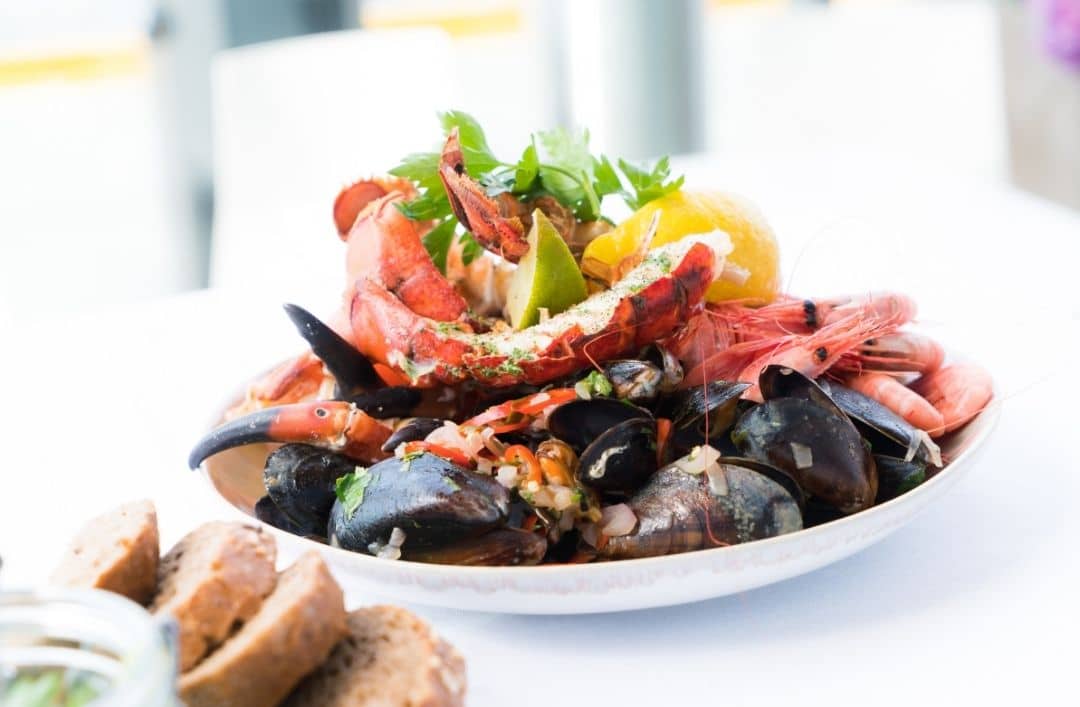
May 4, 2022 | Activities/Services, Sin categoría
Denia is living, breathing cuisine. It’s always been so. But, since 2015, the town was named by UNESCO as being a creative city of gastronomy. The variety, richness, passion, and creativity on display in the kitchens and on dinner plates is the reason why Denia was awarded this distinguished title.
Denia’s deli – The Mediterranean sea
Denia’s cuisine is mainly based on the Mediterranean. The waters that bathe it also offer luxury products. One such being the red prawn which stands out above all others. Such is the tradition and passion for red prawns that even the famous crustacean has a soundtrack created by the famous chef Quique Dacosta. Arroz a banda (rice cooked in fish broth) and dried octopus are other typical dishes of the area. A good example of the reality that the sea has always been an abundance resources.
Other stars of the show
Although Dénia is very much inspired by the sea, Valencian agriculture also plays an important role in its gastronomy. The espencat (which in Valencian means “to crumble with hands”) is a famous salad, containing red pepper, aubergine, tomato, and baked onion accompanied by cod and dressed with olive oil. Going back to the sea, we find another typical dish from Denia with the llandeta. This is a white fish stew that is very common in the Marina Alta area and, as paella is world famous, we must also mention the famous fideuá.
There’s also room for those with a sweet tooth. Pumpkin fritters are a great and healthy alternative to the traditional churros with chocolate. And coca de llanda is probably the most famous snack in the whole Costa Blanca area – a sweet sponge cake to be eaten with a good hot chocolate.
Wine culture is closely tied to the area of the Costa Blanca North. In fact, the oldest winery on the Iberian Peninsula is located in Alto de Benimaquia. Specifically, on the slopes of the Montgó.
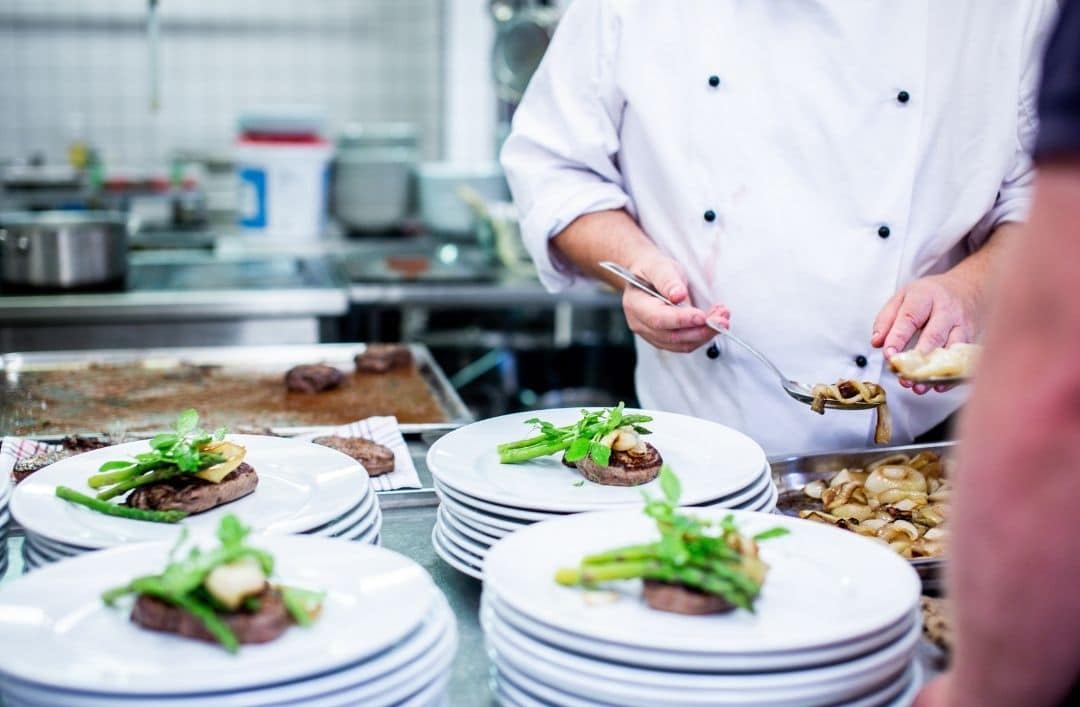
Internationally renowned chefs and restaurants
What is the best way to enjoy Denia’s cuisine? From the dishes of renowned chefs in the best restaurants in the area. The town is a place of work and inspiration for big names in the world of cuisine. Such as Susi Díaz, Joan Roca or Andoni Luis Aduriz, among many others.
But one name automatically jumps to mind: Quique Dacosta. If there is one person who has put Valencian cuisine on the map, it’s this famous chef from Extremadura. His restaurant, Quique Dacosta, is located in Denia (opposite Las Marinas beach). And 3 Michelin stars certify the work behind this ambitious project.
However, beyond this famous restaurant, there are other restaurants very close to Cumbre del Sol. Such as Aticcook, located in the attic of the designer Pepe Cabrera’s showroom. El Raset or Peix&Braxes where the people most refined palates will enjoy the typical gastronomy of Denia.
We think you have enough reasons to drop by Denia and enjoy its local cuisine, don’t you? Keep reading our next articles to learn more about the Costa Blanca North and discover new plans to do near Cumbre del Sol.









